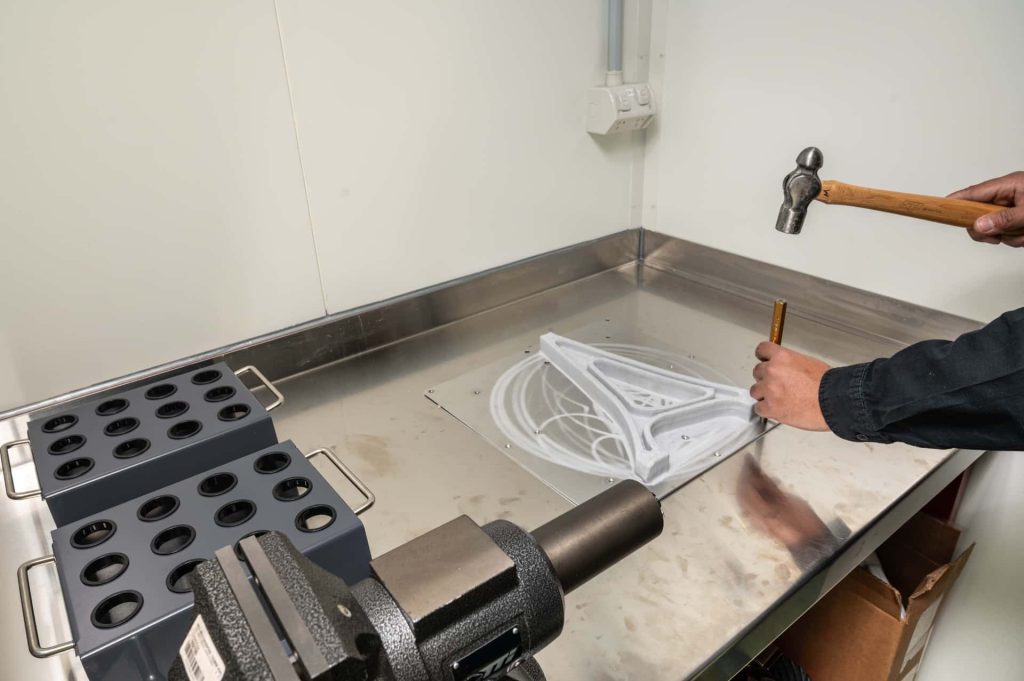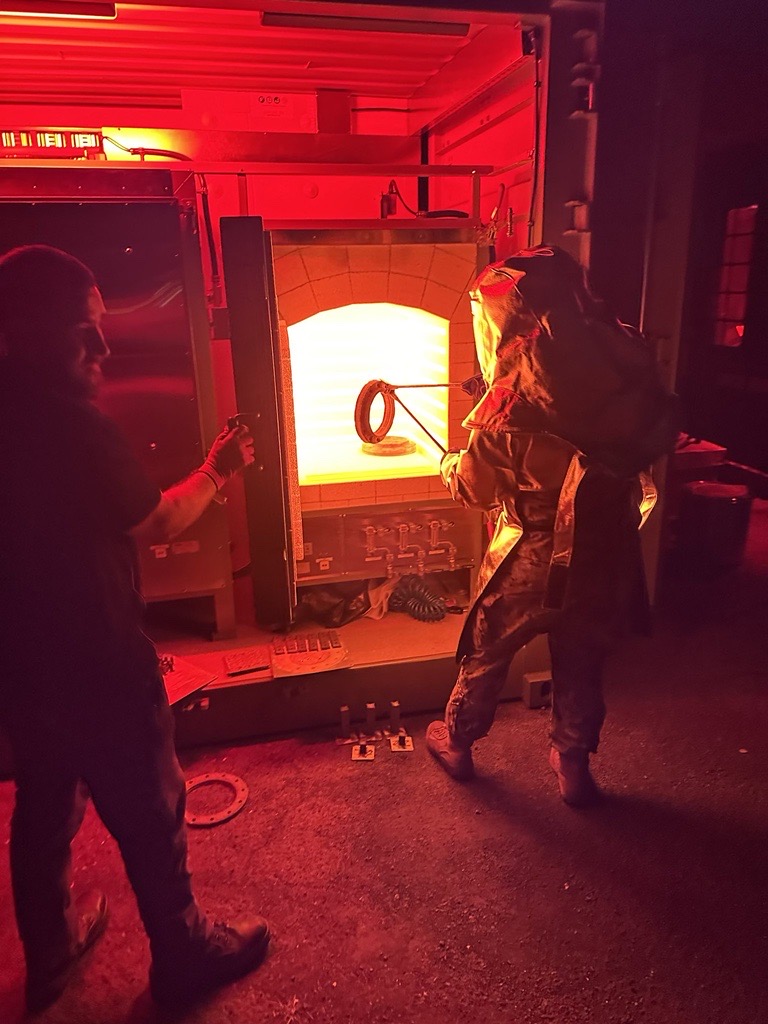SPEE3D, a metal additive manufacturing OEM, has participated in the US Naval Sea Systems Command (NAVSEA) inaugural SALVEX exercise at Pearl Harbor. The operation ran in May 2024 and sought to demonstrate metal 3D printing capability to repair damage and sustain military operations.
Based in Australia, SPEE3D’s XSPEE3D and SPEE3Dcell Cold Spray Additive Manufacturing (CSAM) were used to 3D print critical metal parts. Navy reservists and the Naval Postgraduate School (NPS) were tasked with using on-demand metal printing in a situation simulating a specific naval scenario.
“SPEE3D is honored to be selected by the US Navy once again to demonstrate our proprietary cold-spray metal additive manufacturing technology,” said Byron Kennedy, CEO of SPEE3D “Participating in an exercise where a ship will be purposefully damaged as part of a naval exercise is novel, and we are optimistic that XSPEE3D will be able to print crucial metal parts to help repair the vessel quickly.

Enhancing Naval Capabilities Through Additive Manufacturing
XSPEE3D is an Expeditionary Manufacturing Unit (EMU), or, in more straightforward terms – a shipping container with the equipment necessary to run the metal 3D printer.
This mobile additive manufacturing system is optimized for defense applications and capable of printing metal parts up to 1m x 0.7m (40″ x 30″) within hours. Material options include aluminum, copper, and stainless steel. The SPEE3Dcell unit, which pairs with the XSPEE3D, includes a heat treatment furnace, CNC mill, and essential tooling. CSAM, unlike metal additive processes like Laser Power Bed Fusion or Electron Beam Melting, does not require lasers or inert gases.
“Ensuring the security of our nation requires technology that can successfully work in all environments – including at sea,” said a Navy spokesperson. “Supply chain issues are prevalent, so being able to manufacture metal parts quickly and from anywhere is a huge issue that we’re excited to test and hopefully resolve.”
“The ability to quickly produce and deploy essential components is critical for maintaining our naval forces’ operational readiness and effectiveness.” SPEED3D’s CEO noted, “Our participation in the SALVEX exercise demonstrates the robustness and adaptability of our additive manufacturing solutions, tailored to meet the rigorous demands of naval applications.”

Additive Manufacturing for the Navy
Increasingly, metal additive manufacturing is finding maritime applications for the U.S. Navy.
For example, Bechtel Plant Machinery Inc. (BPMI) has chosen Velo3D’s advanced metal additive manufacturing (AM) system to enhance the U.S. Naval Nuclear Propulsion Program. The system, featuring the Sapphire XC large format printer, is optimized for stainless steel 415 and will be operated by ATI at their new facility near Fort Lauderdale, Florida. This integration aims to streamline the production of complex parts, previously made through casting, thus reducing lead times and optimizing the supply chain for critical components.
The collaboration between BPMI and ATI highlights the Navy’s strategic adoption of additive manufacturing to maintain its fleet, particularly aging vessels. Velo3D’s technology, known for handling intricate geometries with minimal support structures, supports this initiative by improving production efficiency demonstrating the utility of metal 3D printing for nuclear propulsion. This development is seen as a significant step forward in bolstering the Navy’s maintenance and operational readiness.
Elsewhere, rocket engine manufacturer Ursa Major has secured a contract with the US Navy to design, 3D print, and hot-fire test a prototype solid rocket motor (SRM) for the Standard Missile (SM) program. Utilizing its additive manufacturing-powered Lynx technology, Ursa Major aims to develop next-generation SRMs optimized for manufacturability and reliability. The 3D printed solid rocket motors project, under the Naval Energetic Systems and Technologies (NEST) Program, focuses on creating a 3D printable design for the Mk 104 dual rocket motor, which is integral to the SM-2, SM-3, and SM-6 missiles.
With the US facing a high demand for SRMs and a shortage of domestic suppliers, Ursa Major’s Lynx technology is set to accelerate and scale the production of critical missile components. Joe Laurienti, Founder and CEO of Ursa Major, emphasized the company’s capability to rapidly develop high-performance motors at scale, addressing urgent national needs. The collaboration involves the US Navy’s Program Executive Office Integrated Warfare Systems (PEO IWS) 3.0 and other naval divisions. The new 3D printed SRM is expected to enter production within three years, significantly enhancing the Navy’s missile capabilities and industrial base.
Join our online event, Additive Manufacturing Advantage: Aerospace, Space & Defense to hear from experts and end-users in cutting-edge verticals. Register now.
Stay up to date with all the latest news subscribe to the 3D Printing Industry newsletter.
Follow us on LinkedIn, Twitter and, Facebook for the latest updates. Watch past webinars, revisit 3D printer reviews and insights from tradeshow on our YouTube channel.
Featured image shows A Navy Reservist operating the SPEE3D Cell. Photo via SPEE3D.


